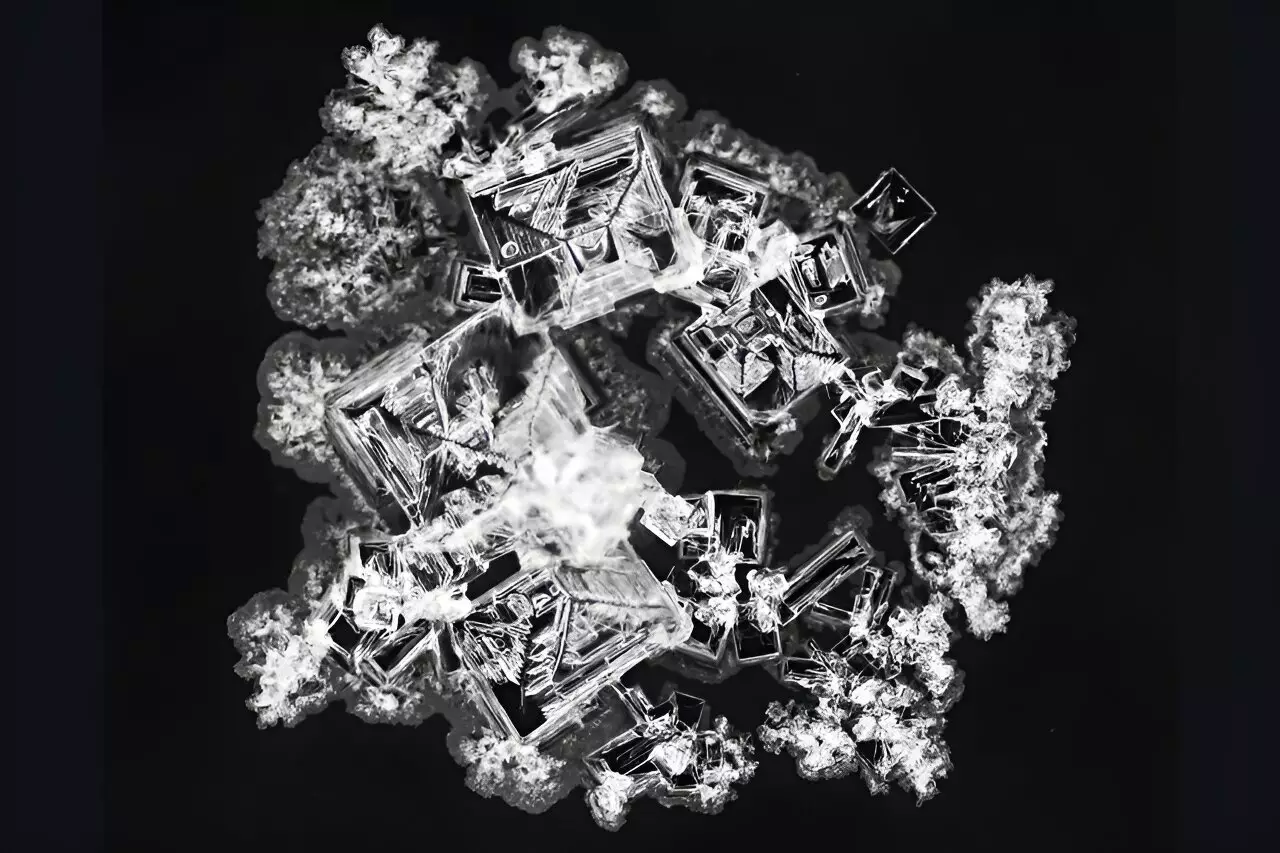Imagine examining a seemingly ordinary drop of salt solution as it dries, revealing intricate patterns that could easily be mistaken for abstract paintings. This is not merely a visual marvel; it serves as a canvas for significant scientific inquiry. Researchers in the Florida State University Department of Chemistry and Biochemistry have embarked on a groundbreaking journey, utilizing these beautiful yet complex patterns to harness machine learning for chemical identification. Published in the prestigious Proceedings of the National Academy of Sciences, this research brings a fresh perspective to how we understand chemical compositions fundamentally.
Revolutionizing Chemical Identification
Oliver Steinbock, a leading chemist, explains the heart of this project in a rather captivating manner: the study of “chemical fingerprints” across different salt varieties. Just as every fingerprint is unique, the patterns formed by dried salt solutions also have their idiosyncrasies. A visual inspection might suggest uniformity among sodium chloride samples, but in reality, subtle differences bring richer diversity into play; through advanced photography and machine learning, these nuances can be quantified.
Upon systematically capturing a staggering 7,500 photographs of 42 distinct types of salt stains, FSU researchers deployed sophisticated software to translate visual data into a calculable format. By emphasizing 16 variables—ranging from the configuration of the crystals to their compactness—they developed a numerical representation of the salt stains that could be processed by machine learning algorithms. This innovation isn’t just about embracing technology; it reflects a broader trend in modern chemistry where data-driven methods can elucidate structures and functions in ways previously thought impossible.
Machine Learning Meets Chemistry
The breakthrough moment occurred when this machine learning framework was put to the test against images beyond its initial dataset. To everyone’s astonishment, the algorithm identified the correct salt composition with a success rate soaring at 90%. This development stands as a testament not merely to adept programming but to the exciting possibilities that emerge when artificial intelligence intersects with scientific investigation. One must consider the implications: who would have imagined that a mere photograph could differentiate between sodium chloride and potassium chloride, two substances that appear nearly indistinguishable to the untrained eye?
This study positions itself at the convergence of chemistry and technology, highlighting how advanced analytical methods can bolster our grasp of environmental and chemical disciplines. By utilizing quantitative analysis far beyond human capability, the research signifies a leap toward more efficient material identification processes.
Future Directions and Applications
What’s perhaps even more exciting is the potential for expansion. Steinbock’s team envisions amplifying their database through the analysis of hundreds of thousands of additional images. This not only promises to refine the algorithm’s precision but also poses intriguing possibilities for automation in the lab, as they experiment with robotic systems capable of imaging salt patterns. Furthermore, this shift represents a major evolution in how we can conduct chemistry and manages materials in varied contexts—be it on Earth or in space.
Imagine outfitting extraterrestrial rovers with a lightweight camera system capable of delivering real-time chemical analyses. While packing a full laboratory on a spacecraft poses massive logistical and financial challenges, a camera built on this revolutionary framework could simplify the task tremendously. Moreover, simpler applications like lab safety inspections, drug screening, or rapid health diagnostics in resource-limited settings could vastly enhance operational capabilities.
The Minimalist Advantage
A particularly captivating aspect of this approach is the minimal material requirement needed for analysis. With mere milligrams of salt constituting the spills or residue being inspected, this technique empowers researchers and operators with swift insights into potentially hazardous substances. In practical scenarios, it could serve as an initial screening tool—a first step to navigate the complexities of chemical spills or stains in diverse environments, providing a timely response before extensive testing.
This research exemplifies how fundamental scientific exploration can lead to revolutionary ideas that bridge chemistry, artistry, and advanced computing. It beckons us to reconsider how we interact with the world at a molecular level, urging us to appreciate both the elegance of nature’s designs and the power of human innovation. As more data is harvested, and the algorithms improve, there’s no telling how far this art form of chemistry can force us to rethink our engagement with the substances around us.

